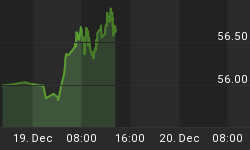While there are many uncertainties concerning the economy going forward, one thing is certain: The federal funds rate is essentially zero and the only possible future direction for the rate is up.
The Federal Reserve has progressively lowered the federal funds rate over the past 28 years from a 21 percent level in 1981 to effectively zero at present. The rate at the end of December was 12/100ths of 1 percent (0.12). It is, as if, we had a 21 gallon gas tank that is now on empty.
During this 28-year cycle, monetary policy has been the primary tool the government has used to stimulate economic growth. Lowering the federal funds rate in an effort to lower interest rates for borrowers has been the principal vehicle used by the Fed.
Lower interest rates have provided a powerful tailwind for the economy during this quarter century megacycle. Home mortgages and their impact on home prices illustrate this impact. Freddie Mac data indicate that the average 30-year fixed rate mortgage for 2009 was approximately 5 percent. In 2000, it was 8.05 percent. A decade earlier in 1990, it was 10.13 percent. At the height of the interest rate cycle in 1981 and 1982, the annual rate exceeded 16 percent. In short, the 30-year rate is now less the a third of its peak level and half of where it was 20 years ago. It would take a 60 percent increase in the 30-year rate just to reach its average level at the beginning of this decade.
As the 30-year rate has fallen, home prices have climbed sharply. Lower borrowing rates were the most important contributor to the housing price boom between 1981 and 2007. Homes have been by far the biggest investment for most Americans. As they climbed in price, Americans built nest eggs on which to retire out of the accumulating equity. In recent years, home price appreciation has also been used as a piggybank for a wide variety of expenditures as homeowners took out equity loans.
Mortgage rates and home prices illustrate the larger picture of overall asset inflation as interest rates have been repeatedly lowered. Lower rates make shopping centers, office buildings and industrial facilities more affordable and jack up their prices/book values.
This long period of ever lower federal funds rates is over. It has gone on for so long that many have taken it for granted. We are like pilots who have been flying for more than 25 years with a strong tailwind. It is imbedded in our expectations. It is imbedded in our economic history and the models that economists use to predict future levels of economic activity. Even if you acknowledge that there will be no tailwind going forward, you may be so conditioned to its presence that it will influence your decisions nevertheless.
There are two take-aways for investors going forward: (1) Without the powerful tailwind of ever lower federal funds rates, economic growth and asset appreciation are likely to be significantly less than they have been for the past quarter century; and (2) Be skeptical about models and economic projections that rely on data from the era of ever lower rates.















